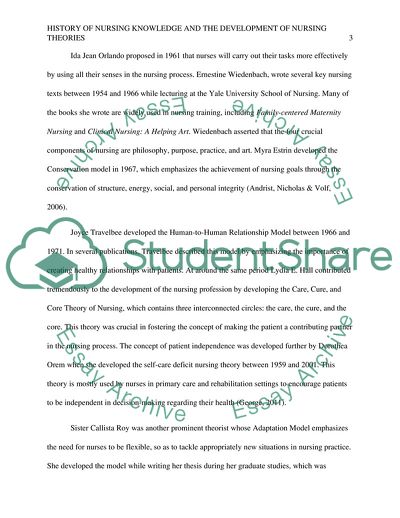Not Found (#404) - StudentShare. https://studentshare.org/nursing/1795281-history-of-nursing-knowledge-and-the-development-of-nursing-theories
Not Found (#404) - StudentShare. https://studentshare.org/nursing/1795281-history-of-nursing-knowledge-and-the-development-of-nursing-theories.


